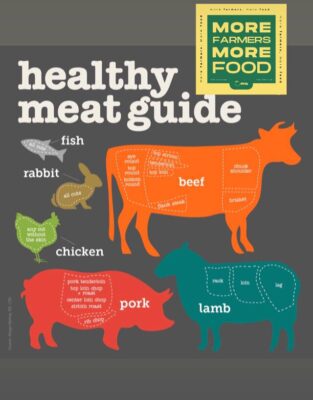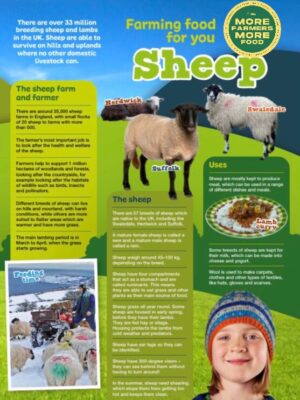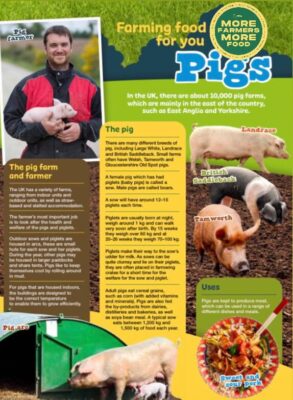Week 9 of More Farmers More Food campaign looks at meat farming in the UK
In this Article...
Which meats do we produce in the UK and what do they provide in our diet.

In ancient times man’s food came from the wild. About 10,000 years ago we began to select and promote specific plants and animals for domestic cultivation. This was the beginning of farming. Today’s growing world is being fed by a declining population of farmers.
Livestock farming for meat production has been an established industry in the UK for many years. Over the years farming techniques have been altered and modernised to ensure animal health and welfare remains a high priority for farmers.
Modern farming relies on the use of machinery and chemicals to improve operating efficiency. Farmers have a responsibility to supply food in large quantities, at affordable prices and cause minimum damage to the environment. Farming is therefore highly complex. Lastly, it requires money to finance and relies upon favourable weather conditions.
Farming in rural areas of the UK depends on the types of land and what they use it for. Depending on the climate, altitude, types of soil, geography of the area or the latitude.
Arable farming tends to be concentrated on the drier East of the UK, whereas dairy, meat and hill farming is more concentrated on the wetter West side. There is some pig farming on the flat lands of the East too. Cows, sheep and pigs are reared as the main meat sources outside in the UK.

Did you know there are 33 million sheep in the UK? They were among the first animals to ever be domesticated by man. Some think that this happened between 9-11,000 years ago in the Middle East. Sheep are able to survive where no other domestic livestock can and graze hills where no other food sources can be grown. The UK has 57 native breeds of sheep. They are ready to be sold for meat once they are 38-40kg and well-grown.

Today’s pig farming industry has been influenced by 6,000 years of history. Originally pigs were bred to consume waste products, fertilise the land and provide meat. History books refer to swine being kept as early as 800bc. The Greeks and Romans ate pork. It was common for people in Britain to keep a pig, but nowadays they are mainly raised on farms. Pigs eat a mixed diet and are ready to be sold for meat once they reach a weight of 70-110kg.
There is also aquaculture where fish, seafood and aquatic plants are farmed. Along with fish farming, they also farm mussels and crabs. Scotland is well known for its salmon farming.
Some people also choose to eat rabbit, turkey, venison, duck, goose, wild boar, organ meats and game birds such as pheasant.
Generally speaking, meat offers an excellent source of protein and provides a good range of essential nutrients. It tends to be a better source of vitamins than most other food types.
Pork is a more significant source of thiamin (B1) than most other food types.
Lamb and mutton are both nutritious meat options. Pasture-fed grazing means the omega 6 to 3 ratio is very low compared to other meats. It also contains zinc, selenium and B vitamins.
In recent years venison has become more popular due to its healthy reputation among consumers. It has a much lower fat ratio than other meat and the omega 6 to 3 ratio stands at approx 2:1 It has more vitamins and minerals than beef and fewer calories. In short, it is the most nutrient-dense meat out there due to its life in the wild.
As wild boar lives and feeds in its natural environment, it contains a higher proportion of omega 3 fatty acids than its grain-fed farmed relations.
Although the idea of rabbit meat can seem strange to us in the modern world, it’s quite common in some parts of the world. It’s high in B12 and selenium and although not as high in protein as some meats, it’s low in fat and calories and offers better omega 6-3 ratios than other meats.
Goat meat is a popular choice around the world and it offers a rich source of B vitamins and several important minerals. It gives a good amount of protein for a low amount of calories.
Humans are consuming excessive amounts of omega 6 in recent times which is thought to be detrimental to good health. Fully grass-fed animal meat contains better fatty acid ratios.
Today only 3% of the population produces most of the food that is required. It’s time for us to become farmers again!



